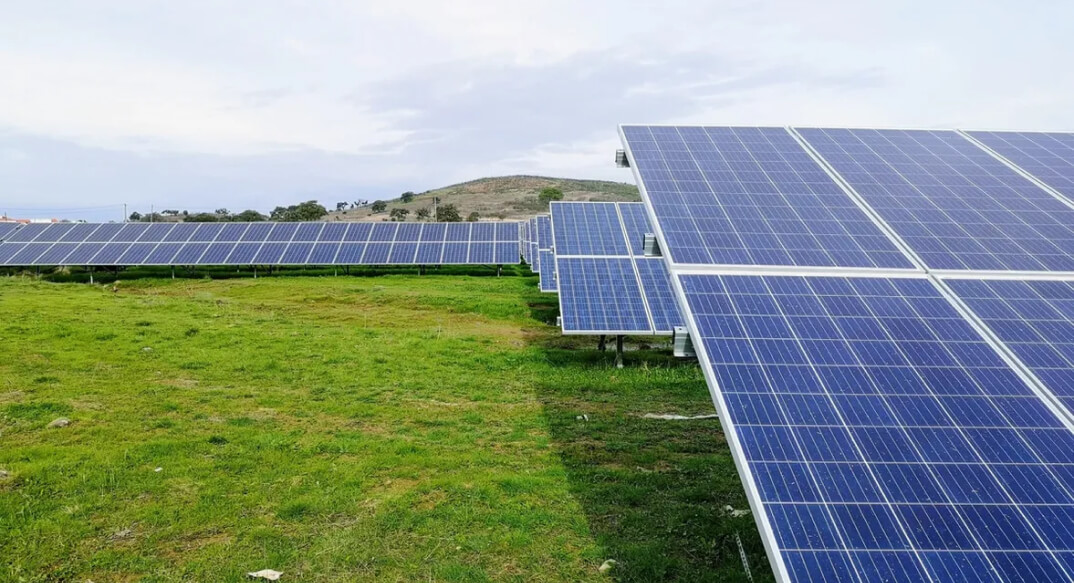At Glint Solar, we are very excited about the approval of the Inflation Reduction Act. What does it mean for the solar industry?
At Glint Solar, we are ecstatic about the approval of the Inflation Reduction Act, in other terms a momentous Climate Bill. The bill outlines a $369bn spending plan for renewable energy and sets a goal of reducing US carbon emissions by 40% by 2030. A great cause for celebration. On the other hand, we see an urgent need to act with all the recent bouts of extreme heat across the globe. The Arctic is warming four times faster than the rest of the planet, striking very close to home here at Glint, headquartered in Norway. A quarter of US land, home to 100 million Americans, will be subject to more than 52C (125F) within the next three decades, and the list goes on. We need better, cleaner power and fast.
We don’t intend to paint a gloomy picture. Actually, we are very optimistic but we understand the need to act swiftly and with intent. Hence, we are more motivated than ever to build a valuable product to accelerate the rollout of solar energy.
Let’s dive into what the Inflation Reduction Act means and how Glint Solar can have a strong impact.
⚡️ Deploy, Deploy, Deploy
The bill is hailed as game-changing for the growth of solar power. Reducing the time to identify and build solar installations is paramount and key to realizing our solar ambitions. Princeton University estimates that this bill can result in a fivefold annual increase in utility-scale solar deployment in the US, from 10GW p.a in 2020 to 49GW in 2024. The study points out that this projected growth rate for solar deployment can be impeded by the need to site and permit projects at a requisite pace and scale, as well as expanding electricity transmission and storage to accommodate new generating capacity.
Deploying at scale will require coordinated efforts. Better software tools will play a large role and Glint Solar is here to play its part.
☀️ What the IRA means for the solar industry
Production Tax Credit (PTC) and Investment Tax Credit (ITC) - extended until 2025 which then converts to a clean electricity production tax credit (CEPTC) and clean electricity investment tax credit (CEITC). This scheme is in place until 2032, a crucial long-term commitment to utility-grade solar roll-out
- A production tax credit of 1.5c per kWh for electricity produced from renewable energy including solar. The PTC is based on the electricity generated by a project over a 10 year period.
- The Investment Tax Credit has increased from 26% to 30% (p. 263 on the bill). The ITC allows investors to claim a one-time tax based on a project’s value.
We are additionally excited about the adjacent opportunities. All things move in lockstep. The Act creates advanced manufacturing production tax credits for clean energy components, known as 45X credits. The congressional committee estimated that the bill will direct $30bn over the next 10 years to advance the manufacturing of solar panels, components, inverters, and batteries for EVs and the power grid.
The bill allocates $3bn of direct investment into EV Charging Infrastructure and incentivizes consumers to purchase EVs by providing $7,500 and $4,500 tax credits for new and used EV purchases. This supportive policy can enable the mass adoption of EVs in the US, similar to what we have seen in Norway (78% of new car registrations were EVs in June) and the wider European market. This further underscores the need to develop greater solar energy capacity as customers will be quick to react and take advantage of such policies, resulting in S-curve adoption.
💡 How solar power can reduce inflation
Prices for wind, solar and batteries have plunged in recent decades. Renewable energy is inherently deflationary and is simply a function of the inputs and outputs. The input, solar irradiation, is free and abundant. Fossil fuels are neither, as the resource becomes increasingly scarce and harder to extract, resulting in more volatility and inflationary pressure. In the US, 41% of overall inflation is attributable to fossil fuels.
As noted above, extreme weather events cause disruption and create an increasing need to rebuild, causing demand-pull inflation. Additionally, flooding, fires and droughts impact the cost curve with lower agricultural productivity and more expensive inputs, again, causing inflation. Hence, a stable and low-cost clean energy source is paramount to drive sustainable future growth across the globe.
🛰 Glint Solar’s role in supporting this transformation
Our ultimate goal is to help customers source valuable sites for solar installation, build and manage their pipeline as portfolios scale. We optimize for success, our geospatial AI and ML tools allow our customers to run preliminary technical and financial analyses on solar projects across thousands of sites thus improving their chances of success in deploying. Deployment is a game of scale and we love scaling.
We are here to build valuable tools for you. We are always listening. Feel free to get in touch about our product, to discuss the solar market, or if you have suggestions for valuable features.
Our dream is to live in a world of clean energy abundance. Let’s make it happen!
